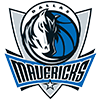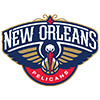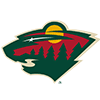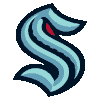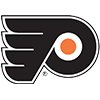Best ball is a format that continues to grow in the fantasy sports world. It began in NFL and has expanded to MLB. And despite some fits and starts (the former DRAFT.com shut its doors), it's in full force for the 2020 season. Three major contest providers have best ball MLB formats: Best Ball 10s (from Fanball), Fantrax and RT Sports.
If you're not familiar with the best ball format, it's a scoring system that figures out your optimal lineup each week and gives you credit for those points. You draft a starting roster and bench and thereafter there are no free agents, trades or transactions of any kind. You pick your roster and only watch your stats and standings during the season. The upside is you get the enjoyment of the draft without the work of maintaining a roster in a season-long league.
As a result, a paid best ball league with prizes are becoming the best way to learn the player pool in the preseason. Free mock drafts are great (RotoWire used to own a pioneering draft site called MockDraftCentral.com), but most participants bail on a draft after the first few rounds. With a paid-entry best ball league, every pick matters. And there's nothing better to force you to learn the player pool when you are on the clock and need to make a decision.
While best ball leagues are a great vehicle to learn the player pool and mimic most season-long leagues, there are some key
Best ball is a format that continues to grow in the fantasy sports world. It began in NFL and has expanded to MLB. And despite some fits and starts (the former DRAFT.com shut its doors), it's in full force for the 2020 season. Three major contest providers have best ball MLB formats: Best Ball 10s (from Fanball), Fantrax and RT Sports.
If you're not familiar with the best ball format, it's a scoring system that figures out your optimal lineup each week and gives you credit for those points. You draft a starting roster and bench and thereafter there are no free agents, trades or transactions of any kind. You pick your roster and only watch your stats and standings during the season. The upside is you get the enjoyment of the draft without the work of maintaining a roster in a season-long league.
As a result, a paid best ball league with prizes are becoming the best way to learn the player pool in the preseason. Free mock drafts are great (RotoWire used to own a pioneering draft site called MockDraftCentral.com), but most participants bail on a draft after the first few rounds. With a paid-entry best ball league, every pick matters. And there's nothing better to force you to learn the player pool when you are on the clock and need to make a decision.
While best ball leagues are a great vehicle to learn the player pool and mimic most season-long leagues, there are some key differences to being successful in the format. Since you can't make any transactions, a player's floor becomes much more important than most leagues. A rookie who won't get called up until half way through the season will give you a painful zero for most of the year. A player who could lose their starting job or an injury-prone starter may not be worth the risk in the best ball format.
With that basic strategy tenant out of the way, here are some other key strategy elements for each of the three major best ball contest providers.
Prize Structure
As with all fantasy leagues, the most important step to winning is knowing the rules of your league. Most of the best ball formats are total points. Some best ball games have prize structures that only reward the top finishers, while others reward the top half. Fantrax has best ball formats with prizes for the top-two finishers and top-six finishers in 12-team leagues. BB10s have top-two, top-three and top-six prize formats in 12 team leagues. RTSports only has top-two prize formats. All three providers have entry fees ranging from $10 to $100.
A format with half the league finishing in the money makes a safer strategy even more optimal (though best ball already rewards a player's floor). A format with just two top prize finishers likely requires a team to take on more risk.
Position Requirements
A key component to best ball is that since you can't set your lineup, you need to be mindful of having not only a viable starter at each position but a decent backup option at each position. Each of the three major providers have different starting lineup requirements. All three also do not require a MI (middle infield) or CR (corner) position like most season-long leagues.
BB10s
Starting Lineup
C - 1
1B - 1
2B - 1
3B - 1
SS - 1
OF - 2
UT - 1
P - 4
20 bench spots
With just four pitchers counting each week, the BB10s place the least amount of emphasis on pitching. A stars-and-scrubs approach on pitching may work since 1 or 2 great pitchers could be a top-four point producer each week. Or a larger bench of pitchers with quantity over quality could work since only four need great weeks.
Fantrax
Starting Lineup
C - 1
1B - 1
2B - 1
3B - 1
SS – 1
OF – 5
UT - 3
P - 9
UT -3
18 bench spots
Fantrax, unlike the other contests has limits on your bench spots by position. However, their game also has the deepest rosters with 40 players drafted. It also has limits on the maximum players you can take at each position.
Draft Limit
C - 5
1B - 5
2B - 5
3B - 5
SS - 5
OF - 13
P - 22
RT Sports
Starting Lineup
C - 1
1B - 1
2B - 1
3B - 1
SS – 1
OF – 3
UT - 1
P - 7
10 bench players.
RT Sports has the smallest roster, so more of an emphasis on quality pitching is needed. If you draft a backup at each hitting position, that leaves just one pitcher on your bench. Positional scarcity is also key. You'll find teams in this format often taking a top-12 second baseman, for example, over an outfielder that ranks much higher in projected total points. With so few bench spots, a player's floor also becomes more important.
Multi-position eligibility
A key rule to watch for best ball formats is multi-position eligibility. If you've played best ball formats for NFL, there's no such thing as multi-position players. You simply figure out your backups and depth at each position (don't forget to take a 2nd or 3rd tight end, for example). In MLB, players regularly qualify at multiple positions. A player with multi-position eligibility in best ball is almost like having an extra player on your bench. For example in the RT Sports format, let's say you draft 9 starting hitters and 6 reserve hitters. That's 15 hitters for 9 starting spots. If 5 of those hitters are eligible at two positions, that's suddenly having 20 eligible players for 15 spots. The odds of getting your nine best hitting performances each week into the nine positional slots has dramatically increased.
As a result, I heavily lean toward taking multi-position players whenever possible. After the first two rounds, I find myself boosting the value of multi-position players several rounds. Jeff McNeil with his eligibility at 2B, 3B, OF boosts his value in this format. RT Sports and BB10s use the standard 20 games last season and 10 games in the upcoming season for a player to be eligible at a position. So it is possible for a player to gain additional positional eligibility during the season.
Shohei Ohtani is only a pitcher in Fantrax and RT Sports, However, he's P and UT eligible in BB10s, which boosts his value considerably. If he has just a two-home run week at DH or two starts on the mound, he may get into your lineup.
Fantrax, however, does not have any multi-position players. And no players can gain additional positional eligibility during the season. As a result, the Fantrax format makes it much more important to make sure you are mindful of not falling behind on a position. First base in particular is top heavy this season, for example.
Variance is your friend
Since the best ball format figures your optimal lineup at the end of the week, you don't need to set a lineup and guess which players will do better. That gives players with higher week-to-week variance hidden value, since they may show up in you starting lineup more often then in a season-long league. For example, players with extreme park factors could be more valuable. You don't need to be clairvoyant on when Colorado pitchers will have good outings at home or combine them with choice road match ups such as San Francisco or San Diego. Conversely, San Diego hitters may be slightly more valuable since the weeks they play in Coors may not necessarily be offset by their home games.
Starting pitchers vs. closers
All three formats allow you to take relief pitchers and reward you for saves. However, I tend to take only starting pitchers since there's so much turnover among closers. Since you can't pick up closers-in-waiting, it's likely better to take only starters and hope several of your pitchers line up for two-start weeks. The counterargument to that, at least for BB10's, is that saves are worth more than wins (8 points vs. 6 points), so if you get a closer that strings together three-to-four saves in a week, you're getting a massive windfall. As always, know your format.
Points Scoring System
Lastly, be sure to check out each format's scoring system. For example, BB10s were created to mimic a 5x5 scoring system, so steals are more valuable (5 points) than Fantrax (3 points) or RT Sports (2 points). RotoWire has best ball cheatsheets based on each format's scoring system as a quick guide, but be sure to read the rules to see which types of players thrive in each format.
















